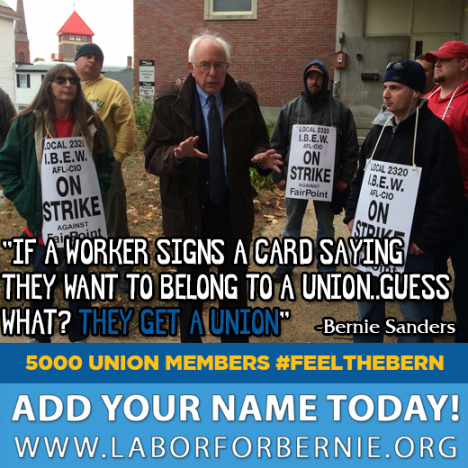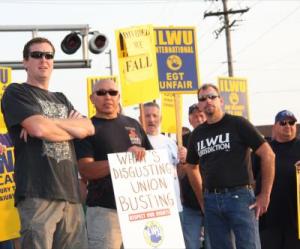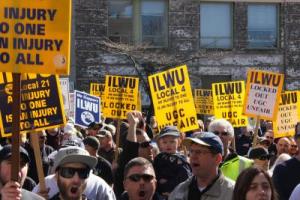by Peter Olney

Bill Fletcher and Bob Wing have written an important post election analytical essay with many excellent recommendations on the path forward. “Fighting Back Against the White Revolt” is a must read for all people of good will concerned about the future of humanity. Throughout the election period, both authors provided clear and clarion voices on the importance of uniting all to vote for Hillary to stop Trump and did education on the left to convince skeptics in the movement to vote for the lesser of two evils to stop the racist, misogynist, xenophobic, authoritarian Donald Trump. Everything in Trump’s behavior since November 8 upholds the wisdom of that advice.
Serious engagement in electoral politics is not the sum total of the struggle, but as we are witnessing in the aftermath of November 8, elections do have real consequences. Therefore any strategy must take into account the winner take all and electoral college features of our politic. As Fletcher and Wing point out, Trump won the election by a razor thin margin in three battleground states: Wisconsin, Michigan, and Pennsylvania by the margin of 77,000, the size of a large union local. Labor’s turnout effort and union household votes clearly could have made an enormous difference in the outcome. That’s why it is so important to critically examine how organized labor failed to carry union households to the degree that Barack Obama did in either 2008 or 2012.
I argue that a defection of working class voters to Trump was key to the loss of historic battleground states, and thus the election. The change in Ohio is stunning: from a 23% margin for Barack in 2012 to a Trump margin of 8% in 2016 among union households. These are voters who have been voting for change at least since 2008 and they haven’t gotten it from a corporatist Democratic party.
The problem in Fletcher and Wing’s analysis of working class support for Trump is that they resort to income as a proxy for class. The working class is a many splendored thing, but the traditional Marxist definition of someone who works for a wage and does not own the means of production still resonates for me. But let’s put any doctrinaire disputes aside and look at the income argument. Fletcher and Wing assert that there was no massive defection of working class voters to Trump by pointing to the fact that Clinton won the majority of voters earning under $30,000 and under $50,000. By that line of reasoning, half the unionized workers in American would be cut out of the working class! My son, a fourth-year IBEW apprentice has just been displaced from the proletariat because his income is $30,000 over the threshold that Wing and Fletcher use. The pollster Nate Silver used the figure of $70,000 to debunk the working class support for Trump argument. Do the math. Divide $70,000 by 2087 annual work hours and you get $32 dollars per hour, hardly an outrageous hourly rate and not even a labor aristocrat’s rate! The defection of union households is an important number and accounts for the marginal shifts that proved definitive in those mid Western states.
The distinction is important because going forward there is plenty of work to be done among these workers who voted for Trump, many of them good union members. Fletcher and Wing acknowledge that: “A key starting point (in combatting racism) will be to amplify the organization and influence of whites who already reject Trumpism. Unions will be one of the key forces in this effort.” There is cause for hope in the fact that the largest group in the more than 100 local unions that broke with their parent bodies to support Bernie Sanders were IBEW locals, (the union my son belongs to) where a journeyman in the Bay Area can make $125,220 a year. Of the thirty-six IBEW locals that endorsed Bernie, twenty-eight were construction locals.
None of this means that the points that Fletcher and Wing raise are to be negated, but it does mean that there is potential on the margins to shift significant sections of the electorate as the Trump anti-worker, anti-union realities set in.
Below is a slightly different and more narrowly focused trade union-based program. I modestly call it “Go Red!”
Organizers must go to the Red states, the Red counties, and to the Red members! “Organize or Die!” doesn’t just refer to external organization; it also applies to the singularly important task of organizing our existing members. Ignoring this challenge led us to the colossal disaster of a Trump presidency.
Look at the electoral map. We see slivers of blue on the coasts. And while there are a few exceptional inland pockets of blue, they are surrounded by a sea of red. What is to be done in these massive areas of Trump and Republican dominance in the most recent election? Unions have members who span the entire political spectrum. This is especially true in 25 states that are not yet “Right to Work,” where membership is a condition of employment.
The first part of “Going Red” is being willing to work in the “red” states, that is, those that Trump carried. Many of those who voted for Trump are good and loyal trade unionists. Before the hammer of legislative and court initiatives (ala “Friedrichs Two”) shatter compulsory membership, we have a superb opportunity to speak to the sons and daughters of New Deal Democrats who voted in key electoral states like Ohio, Pennsylvania and Wisconsin for Trump and helped him carry those states. These discussions cannot be approached as rectification and remedial sessions with “wayward” members, but must be part and parcel of massive internal organizing involving their issues, their contracts and their concerns. It’s time to come home and patiently build organization from the bottom up. And when union leaders and activists do, they should be prepared to hear some harsh critiques and serious questions.
This internal organizing cannot be accomplished by inviting members to meetings. Rather, we need to embed newly trained worker leaders into our worksites. Those leaders (Business Agents, Field Reps, Shop Stewards) responsible for contract enforcement cannot carry out this task. New armies of internal organizers are needed to talk to their sister and brother members about unions, politics, and the future of the working class. This internal organization on a massive scale must begin immediately to move this program because the resources for it may be considerably diminished within a year after the onslaught of “right to work” under the NLRA and the Railway Labor Act.
The second part of “Going Red” is labor’s new political project. Union leaders’ comfort with — and access to — the Democratic Party’s neo-liberal establishment just isn’t going to cut it. Our future lies with the exciting political movement within labor that we witnessed in support for Senator Bernie Sanders, the Democratic Socialist from Vermont. Not since Eugene Debs and his 1920 race from prison for President has there been a candidate who espoused our anti-corporate, pro-working class values like Senator Sanders. He captured 13 million votes, won the endorsement of six major unions and was supported by more than one hundred local unions — many of whom defied their International’s support for Clinton. Many Clinton supporters now realize that Bernie, with his “outsider” message, an uncompromising record, and decades of political integrity, would have been a far better choice to beat Trump.
Bernie Sander’s new Our Revolution organization needs a strong union core in order to sustain itself financially and organizationally. Unions that supported Bernie should consider coalescing in a new formation around Our Revolution. Unions that didn’t support Bernie should do some serious self-examination, consider a new path forward, and hopefully join with the Bernie unions. A new “Labor for Our Revolution” could be a network of national and local unions that actively engage their members in electoral politics at both the primary and general election levels to support Our Revolution endorsed candidates who reflect labor’s values. The Labor for Our Revolution network could link its political work with member mobilization around local and national labor struggles to defend workers’ rights and contribute to building a broader movement for social and economic justice.
“Going Red” by having a face-to-face conversation with all our members and launching a new political project are two tasks bound up with each other. Without re-establishing an allegiance with members who supported Trump, progressive electoral victories backed by working class union members will be much harder to achieve. Without giving those members an alternative political vision, like that of Bernie Sanders, there is no moving them politically. That alternative political vision must include the fight for multi-racial unity by recognizing and combatting the pervasive effects of systemic racism.
Finally and perhaps most importantly, “Going Red” means being ready to make sacrifices to defend our brother and sister immigrant workers, Muslims, People of Color and all those who are hatefully targeted by the Trump administration. We can take inspiration from the recent efforts of thousands of veterans to stand with the Standing Rock native peoples. We can take inspiration from unions like the ILWU that sent their members to the Dakotas to stand in defiance of the energy companies. More of these kinds of sacrifices will be necessary to win the allegiance of all people to the cause of labor and the defeat of Trump.
“Go Red” to grow and win power!
Peter Olney is retired from the ILWU staff. His essay is reposted from Portside.
Filed under: Organizing, Politics, Uncategorized | Tagged: ILWU, Labor for Our Revolution, Our Revolution | 2 Comments »











